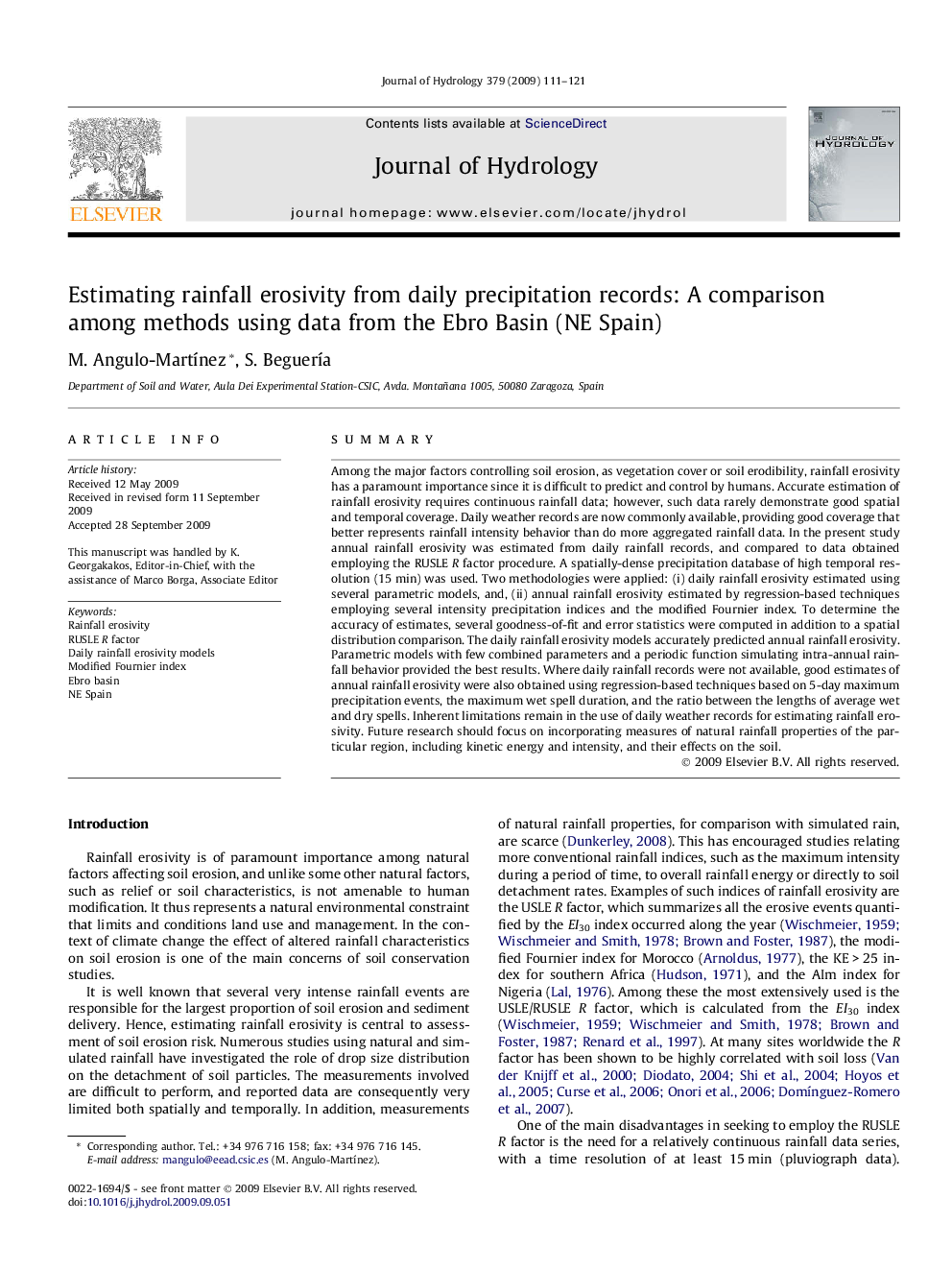| کد مقاله | کد نشریه | سال انتشار | مقاله انگلیسی | نسخه تمام متن |
|---|---|---|---|---|
| 4578517 | 1630067 | 2009 | 11 صفحه PDF | دانلود رایگان |

SummaryAmong the major factors controlling soil erosion, as vegetation cover or soil erodibility, rainfall erosivity has a paramount importance since it is difficult to predict and control by humans. Accurate estimation of rainfall erosivity requires continuous rainfall data; however, such data rarely demonstrate good spatial and temporal coverage. Daily weather records are now commonly available, providing good coverage that better represents rainfall intensity behavior than do more aggregated rainfall data. In the present study annual rainfall erosivity was estimated from daily rainfall records, and compared to data obtained employing the RUSLE R factor procedure. A spatially-dense precipitation database of high temporal resolution (15 min) was used. Two methodologies were applied: (i) daily rainfall erosivity estimated using several parametric models, and, (ii) annual rainfall erosivity estimated by regression-based techniques employing several intensity precipitation indices and the modified Fournier index. To determine the accuracy of estimates, several goodness-of-fit and error statistics were computed in addition to a spatial distribution comparison. The daily rainfall erosivity models accurately predicted annual rainfall erosivity. Parametric models with few combined parameters and a periodic function simulating intra-annual rainfall behavior provided the best results. Where daily rainfall records were not available, good estimates of annual rainfall erosivity were also obtained using regression-based techniques based on 5-day maximum precipitation events, the maximum wet spell duration, and the ratio between the lengths of average wet and dry spells. Inherent limitations remain in the use of daily weather records for estimating rainfall erosivity. Future research should focus on incorporating measures of natural rainfall properties of the particular region, including kinetic energy and intensity, and their effects on the soil.
Journal: Journal of Hydrology - Volume 379, Issues 1–2, 15 December 2009, Pages 111–121